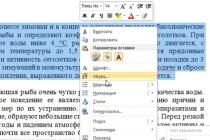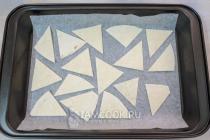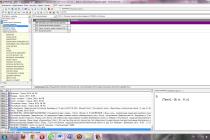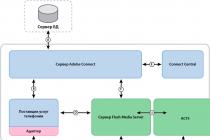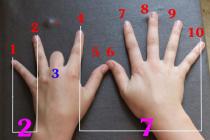One day Windows 10 may not start. Fortunately, a system restore will take a maximum of a day if you use backups and the right arsenal of programs.
Why you need to backup Windows 10 with disk contents
A backup is creating an image of the C drive with all installed programs, drivers, components, and settings.
Backup copy operating system with already installed drivers is created in the following cases:
- it is necessary to effectively restore a Windows system that has undergone a sudden crash, with minimal losses or without loss of personal data, without wasting extra time on it;
- it is necessary to restore the Windows system without re-searching for drivers for the hardware of the PC and OS components found, installed and configured after long searches and experiments.
How to create a copy of Windows 10 and restore the system using it
You can use the Windows 10 Backup Wizard, built-in Command Prompt, or third-party applications.
Backing up Windows 10 using DISM
The Deployment Image Servicing and Management (DISM) utility works through the Windows Command Prompt.
- Press and hold the Shift key before restarting Windows 10. Restart your PC.
- Give the command "Troubleshooting" - " Extra options"-" Command line "in the environment Windows recovery 10.
Windows Recovery Environment has a full arsenal of startup fixes
- In the opened command Windows prompt enter the command diskpart.
The slightest mistake Windows commands 10 will lead to re-entering them
- Enter the list volume command, select the label and parameters of the partition on which Windows 10 is installed from the list of disks, enter the exit command.
- Type dism / Capture-Image /ImageFile:D:\Win10Image.wim / CaptureDir: E: \ / Name: "Windows 10", where E is the drive with Windows 10 already installed, and D is the drive to which the backup will be written OS. Wait for the copy of Windows to finish recording.
Wait for the Windows disc copying to finish
Windows 10 and the contents of the disc are now written to a different disc.
Create a copy of Windows 10 using the backup wizard
Working with the "Command Line" is the most professional way from the point of view of users. But if it doesn't work for you, try Windows 10's built-in backup wizard.
- Click "Start" and enter the word "reserve" in the search bar of the Windows 10 main menu. Select Windows 10 Backup and Restore.
Run the tool Reserve copy Windows via the start menu
- In the Windows 10 Log File window, click the System Image Backup button.
- Confirm your choice by opening the "Create a system image" link.
- Select save option the image being created Windows.
Choose, for example, save the Windows image to an external drive
- Confirm saving the Windows 10 disk image by selecting the partition to save (for example, C). Click the start backup button.
Confirm the backup image by selecting a disk from the list of partitions
- Wait until the copy of the disk is written to the image. If you need an emergency Windows disk 10, confirm the request and follow the prompts of the OS Rescue Disks Burn Wizard.
Windows 10 rescue disk can make OS recovery easier and faster
You can start restoring Windows 10 from the captured image.
By the way, saving on DVD discs is the most irrational way: you will inevitably consume 10 "discs" of 4.7 GB in size with a 47 GB C drive. A modern user, creating a section C of tens of gigabytes, installs 100 large and small programs. Especially "gluttonous" to disk space games. It is unknown what pushed Windows Developers 10 to such recklessness: CDs began to be actively supplanted already in Windows times 7, because then sales of terabyte external hard drives, and the 8-32 GB flash drive became the best solution... Burning to DVD from Windows 8 / 8.1 / 10 would not hurt to exclude.
Video: how to create a Windows 10 image using the backup wizard and restore the system using it
Creating a Windows 10 backup via Aomei Backup Standart and restoring the OS from it
To create a copy of your Windows 10 disc, do the following:

The application also helps to create not just an archive image, but a clone of the disk. It makes it easy to transfer all content from one PC drive to another, including Windows bootloaders. This function useful when there is significant wear on the old media, and it is necessary to transfer all its contents to the new one as soon as possible, without resorting to reinstalling Windows 10 and separate, selective copying of folders and files.
Creating a bootable USB flash drive Aomei Backupper Standart
But to restore Windows in Aomei Backup, you need a different tool. Let's take the Russian-language version of Aomei Backupper Standard as an example:
- Give the command "Utilities" - "Create bootable media".
Select the entry in the Aomei Backupper boot disk
- Select the Windows bootable media entry.
Windows PE bootloader will boot into Aomei Backupper
- Select to write media with UEFI firmware support motherboard PC.
Assign PC support with UEFI firmware to recordable media
- The Aomei Backupper application will check the writeability of the UEFI disc and allow it to be written.
If it is possible to write a UEFI disk, click the continue button
- Specify your media type and click the continue button.
Specify your device and media for recording the Windows disc
Recover Windows from a Windows 10 Aomei Backupper flash drive
Do the following:
- Boot your PC from the USB stick you just burned.
Wait while the PC loads the Aomei Backupper recovery program into memory
- Select Rollback Windows 10.
Enter the Windows 10 Aomei Rollback Tool
- Specify the path to the archived image file. External drive, on which windows image 10 was saved, must be connected, as it must be removed before restarting Windows 10 so that it does not interfere with the Aomei bootloader.
Tell Aomei where to get the data for Windows rollback 10
- Confirm that this is the exact image you need to restore Windows.
Confirm Aomei's Allegiance Request Windows archive 10
- Select the operation to be prepared with the mouse and click the "OK" button.
Highlight this line and press the "OK" button in the Aomei Backupper
- Click the Windows Rollback Launch Button.
Confirm Windows 10 rollback in Aomei Backupper
Windows 10 will be restored in the form in which you copied it to the archived image, with the same applications, settings and documents on the C drive.
Wait until the end of the rollback of Windows 10, it will take up to several hours
After clicking Finish, restart the recovered OS.
Video: how to create a Windows 10 image with Aomei Backupper and restore the system using it
Working on Windows 10 recovery in Macrium Reflect
Macrium Reflect is a good tool to quickly restore Windows 10 from a previously recorded backup image. All commands have been translated into Russian due to difficulties with the availability of a Russian-language version.
To copy data from a disk where Windows 10 is installed, do the following:
- Download, install and run Macrium Reflect application.
- Give the command "Save" - "Create a system image".
Open Windows 10 Archive Tool in Macrium
- Select the Create Image of Partitions Required for Windows Recovery tool.
Go to the selection of logical drives important for Windows 10 backup
- Macrium Reflect Free will select the required logical drives, including the system one. Give the command "Folder" - "Browse".
Click the browse button for files and folders on your PC in Macrium Reflect
- Confirm to save the Windows 10 image. Macrium Reflect saves the image by default without giving it a filename.
Macrium also suggests creating a new folder
- Click the Finish button.
Press the end key in Macrium
- Leave both "Start Copy Now" and "Save Archive Information to Separate XML File" checked.
Click "OK" to start saving a backup copy of Windows
- Wait until the end of recording the archive from Windows 10.
Macrium will help you copy Windows 10 and all programs with settings into an image
Macrium saves images in MRIMG format, not ISO or IMG, unlike most other programs, including built-in Windows 10 backups.
Creating bootable media in Macrium Reflect
In case the system cannot start without external media, you should take care of a bootable USB flash drive or DVD in advance. Macrium application adapted for recording bootable media... To speed up the process, the teams have been translated into Russian and popularized.
- Start Macrium Reflect and give the command "Media" - "Disk Image" - "Create Boot Image".
Go to Macrium Reflect Rescue Media Creator
- Start Macrium Rescue Media Wizard.
Select the media type in the Rescue Disk Wizard window
- Select Windows PE 5.0 (versions based on the Windows 8.1 kernel that include Windows 10).
Version 5.0 is compatible with Windows 10
- Click the Next button to continue.
Click the go to button further settings Macrium
- After creating the list of drivers, click Next again.
Confirm the action by clicking the same button in Macrium
- After determining bitness Windows 10 click Next again.
Press the continue button again to proceed to further actions in Macrium
- Macrium will offer to download the necessary boot files from the Microsoft website (preferably).
USB disk support must be enabled for Macrium to start recording
- Click the Finish button. The Windows 10 bootloader will be written to the USB stick.
Recover Windows 10 using a flash drive with Macrium Reflect
As in the previous instructions for Aomei, boot the PC from the USB stick and wait for the Windows bootloader to load into the RAM of the PC or tablet.

Windows 10 startup will be fixed. After that, you can continue to work with Windows.
Video: how to create a Windows image using Macrium Reflect and restore the system using it
Why and how to delete Windows 10 backups
The decision to remove redundant copies of Windows is made in the following cases:
- lack of space on the media for storing these copies (storage disks, flash drives, memory cards are full);
- irrelevance of these copies after the release of new programs for work and entertainment, games, etc., deletion of "spent" documents from the C drive;
- the need for confidentiality. You do not leave behind secret data, not wanting them to fall into the hands of competitors, and promptly get rid of unnecessary "tails".
The last point requires clarification. If you work in law enforcement, in a military plant, in a hospital, etc., storing Windows disk images and personal data of employees may be prohibited by regulations.
If Windows 10 archived images were saved separately, image deletion is performed in the same way as deleting any files on a properly working system. It doesn't matter what disk they are stored on.
Don't make yourself difficult. If the image files have been deleted, recovery from a bootable flash drive will not work anyway: there will be nothing to roll back Windows 10 in this way. Use other methods, such as troubleshooting Windows startup or new installation"Dozens" by means of a copy-image downloaded from the Microsoft website or from torrent trackers. Here you need not boot (LiveDVD bootloader), but installation USB flash drive 10.
Windows 10 Mobile Backup & Restore
Windows 10 Mobile is a version of Windows adapted for smartphones. In some cases, it can be installed on a tablet, if the latter does not differ in impeccable performance and speed. Windows 10 Mobile came to change windows Phone 7/8.
Features of copying and restoring personal data in Windows 10 Mobile
In addition to working documents, multimedia data and games, Windows 10 Mobile archives contacts, call lists, SMS / MMS messages, diary entries and an organizer - all this is a mandatory attribute of modern smartphones.
To restore and transfer data to an image from the Windows 10 Mobile Management Shell, it is more convenient to use any external keyboard and mouse than typing long commands with numerous parameters from the sensor for 15 minutes: as you know, one wrong character or extra space, and the CMD (or PowerShell ) will throw an error.
However, not all smartphones with Windows Mobile(as in the case of Android) will allow you to connect an external keyboard: you will need to install additional system libraries and, possibly, compile the OS code in the hope of seeing the cherished cursor and mouse pointer on the smartphone screen. These methods also do not guarantee 100% results. If there are no problems with tablets, then with smartphones, due to a too small display, you will have to tinker.
How to back up Windows 10 Mobile data
Windows 10 Mobile, fortunately, bears a huge resemblance to the "desktop" Windows 10: it is about as similar as the Apple iOS versions for the iPhone and iPad.
Almost all actions in Windows 10 overlap with Windows Phone 8. Most of them in Windows 10 Mobile are borrowed from the usual "ten".
- Give the command "Start" - "Settings" - "Update and Security".
Select Windows Mobile 10 Update and Security Tool
- Start Windows 10 Mobile Backup Service.
Select Windows 10 Mobile Backup Service
- Turn it on (there is a software toggle switch). Settings may include both copying personal data and settings already installed applications and the OS itself.
Turn on copying data and settings to OneDrive
- Set up an automatic backup schedule. If you want to sync your smartphone with OneDrive immediately, click the Archive Data Now button.
Include a schedule and define personal details specific applications to be transferred to OneDrive
Since the size of the C and D drives on a smartphone is often not as huge as on a PC, you will need an account. cloud storage such as OneDrive. The data will be copied to the network "cloud" One Drive with its help. All this resembles the work of the service. Apple iCloud on iOS or Google Drive on Android.
To transfer data to another smartphone, you also need to log in under your account OneDrive. Perform the same settings on it, the Windows 10 Mobile backup service will download all personal files from the cloud to the second device.
Video: How to Back Up All Data from Your Windows 10 Mobile Smartphone
Create a Windows 10 Mobile image
With Windows smartphones 10 Mobile is not as simple as it was with regular version Windows 10. Unfortunately, Microsoft never provided a working tool for backing up pure Windows 10 Mobile. Alas, everything is limited only to the transfer of personal data, settings and applications installed on a smartphone to another smartphone. The stumbling block here is the difficulty of connecting Windows smartphones to external hard drives and flash drives, despite the MicroUSB interface in many smartphones and OTG connections to it.
Reinstallation of Windows 10 on a smartphone is possible mainly by cable using a PC or laptop and a third-party program installed on the latter, for example, Microsoft Visual Studio. If you are using a smartphone that had Windows Phone 8, you need official support Windows 10 Mobile of your model.
Backing up and restoring Windows 10 from backups is no more difficult than working with previous versions of Windows in the same vein. Disaster recovery tools built into the OS itself, as well as third-party programs for the same task, it has become many times more.
The backup is exactly the same system as yours. It includes exactly the same drivers, settings and all other elements of a functioning system. A backup differs from recovery points in that recovery points contain only information about changes to the system, while the backup is the entire system.
First of all, the copy will be needed for quick recovery if any problems arise with the system. Recovering a system from a copy is much easier and faster than reinstalling Windows and all the software you need. In addition, after reinstalling the system, absolutely all personalization parameters will be lost. Therefore, it will be very smart and thoughtful to store any means of storing information with an image, in case of any unforeseen problems. This is especially true for those who especially value files and applications on their personal computer.
Consider the best ways to create a copy for two operating systems - Windows 7 and 10
Windows 10 has a handy tool called Backup and Restore. To use this tool you need:

Important! It is not at all necessary to save the system image only to the computer itself, because if it breaks down, then you cannot fix anything, therefore, the whole point of backup is lost. Use more reliable storage methods.
Installing from the created disk
There are two main situations when you need the disc we created earlier. In the first case, your working machine will be unstable or incorrectly work, but it will still be in service. Another case - you can't even start the computer in any way. The created disk will definitely help us fix the problem in both situations.
In the first case, adhere to the following algorithm of actions:
- Open the "Start" menu, select the "Options" tab. It looks like a gear.

- We select the section "Update and Security", and in it we click on "Restore".


- We get to the tab "Special boot options" and click on the restart button in this window.

- Next, we get to where we need to install the old system. To begin with, select the item "Troubleshooting".

- Then "Additional parameters", in the window that opens, click on.


- This program will independently search for the image and, if it finds it, will begin to return the system to its state. If this does not happen, then you will have to indicate yourself where the copy of your Windows is located.


- The next step is to confirm the recovery procedure, it will begin.

Guide to recovering a system image from a disc

A copy of the "seven"
Owners of a computer with not the most latest version the system also needs to take care of its data and store it in some kind of reliable storage.
- The window will display a message stating that data archiving is not configured. We have to set it up. Click "Configure backup", and the computer begins to search for suitable media for recording.

- Select the disk where the backup will be stored.

- Then the system will want to know what to archive. You can trust it to automatically select files, or you can do it manually. Windows itself will back up the entire disk if there is enough space on the media.



Interesting! It is most convenient and reliable to save to an external HDD... Not everyone has a flash drive of the required size, and ordinary disks are extremely unstable to scratches and mechanical damage.
Backup using special programs
For backup, you can also use the old and reliable program - Acronis True Image. Its main advantages are simple and intuitive interface and compatibility. The application provides a huge selection of settings for faster, more convenient and comfortable backups. This is a great alternative to standard tools.
Let's figure out how to use the program.
- Download it. It is free only for the first 30 days of use, so we activate the trial period.

- Now we need what the program will reserve for us. That is, those disks and partitions that are needed for system recovery. By clicking on the computer icon, you can change the copy source that the utility automatically selected "Whole computer". At your discretion, you can add to backup what you may need.


- Choosing a save location.


- Click on "Create a copy" and wait.


Livecd aomei backupper
For backups, you can also use a reliable program designed for this purpose - AOMEI Backupper. This program is the main competitor of the famous Acronis True Image, it is not inferior in functionality, but at the same time it is free.
Its main advantages are simple and intuitive interface and compatibility with all known operating systems. You can create boot disk or a USB flash drive with the program, if you suddenly need to urgently restore the system without access to a running computer.
Let's figure out how to work with the program.
- Download it. The program is completely free.

- Installation of the program is simple, you just need to click "Next" several times. No unnecessary programs will not install with AOMEI Backupper Standard. Initially, it works in English, it is possible to Russify it, but we do not need to do this. You need to download the crack separately.

- Open the program and click "Create a new copy". The only button that you will see in front of you.

- Click on "Back up the system". You can also make copies of files by section.

- We select a pre-inserted external hard drive, or a partition on your drive.

- Click "Start". A copy will be created in a few minutes.


Recovery via AOMEI

Backing up with dism
Backup can be done via command line... For this:

Important! Note that "D:" is the copy storage location. example.wim is its name. The main thing is not to change the extension. "C:" - the place where the files will be copied from.
If you choose one of these methods and create a system backup in the near future, then you and your files will be reliably protected from unplanned problems with the operating system.
Read the easiest and best ways to delete the old folder in the new article -
Video - Windows 10 Backup
We've already talked about built-in recovery tools that allow you to quickly return Windows 10 to a working state when a software problem occurs. Let's take a closer look at the backup, which allows you to save settings, programs and files.
System imaging
You can create a Windows 10 image using staff resources, which were first implemented back in Windows Vista. Reserve copy of windows 10 will be a snapshot of the system with its settings, installed programs and user files that are stored on the system partition (usually drive C).
The image can be saved on another (non-system) partition hard disk, a second connected hard drive, multiple optical media or network resources. It is preferable to choose the second connected hard drive (if any) or a non-system partition of the hard drive. 
By default, the archive will add the discs on which the boot sector and Windows 10 system partition.
You can archive other partitions, but the built-in imaging tool does not. The best way. When restoring, there is a possibility that the sections with user files collected in the archive will be erased.
Therefore, leave the default configuration - a system-reserved partition and a volume with Windows files. 
After selecting the composition of the image, click the "Archive" button. When the image is ready, the system will offer to create a recovery disc that can be used in case Windows 10 stops loading. 
If you have an empty "blank" at hand, use this opportunity - it is easier to return Windows to a working state from a recovery disk than through the F8 key or installation media. Insert the optical media into your drive and click Create Disc.
You can create a recovery disc later - we talked about this in more detail in the article about
You don't need to do anything else: the backup will be stored in the location you specified until it becomes necessary to use it to restore Windows.
Restoring from a backup
The backup is stored on disk, it remains to do a restore to return Windows 10 to a working state. If the system is unstable, but boots:

If there is no such button in the Windows settings, or the system has stopped starting, then use the previously created recovery disc or installation media with Windows distribution 10.

The Recovery from Image Wizard will appear on the screen. By default, the last system snapshot by date of creation is selected, but you can manually specify the path to an earlier copy if available. Click Next. 
In the second window of the wizard, you do not need to change anything - click "Next". Review the information provided and click Finish to start the Windows 10 recovery process from the previously created system snapshot. 
Confirm the data replacement and wait while the system is being restored from the image. After completing this process, restart your computer. On startup, you will see that Windows 10 is reverted to the state it was in when the system snapshot was taken.
AOMEI Backupper Standard
If the standard backup tool does not suit you, use free program AOMEI Backupper Standard. This utility offers a simple and efficient way creating a copy and then restoring the system.

If the system boots, then you can restore it from the created image in the program interface in the "Restore" section. The location of the copy is determined automatically, but if it didn't, specify the path manually. Make sure you are restoring to the correct locations and click "Start Restore". 
Above was described the ideal option in which you can get into the system. In practice, users only resort to restoring from a backup if Windows 10 completely refuses to start. In this case, you will need a bootable USB flash drive that was previously created in the AOMEI Backupper Standard.
- Connect the USB flash drive to your computer.
- Run the program and go to the "Utilities" tab.
- Select "Create Bootable Media".
After booting from this flash drive, the main program window will open, through which you can start recovery from the image using the instructions above.
There is one more free way create a Windows 10 image - use the Macrium Reflect Free utility. It works on the same principle as AOMEI Backupper, offering to write a backup and create a bootable USB flash drive, which will come in handy in case the system does not start.
There are other options, for example, backup tools from Acronis. They provide more options than the regular one. Windows tool and the programs listed above. In particular, Acronis True Image creates a system snapshot that takes up 2 times less space than an image created Windows tools... But you have to pay for Acronis products, so this option is unacceptable for most users.
In order to create a windows 10 image, you need a special utility developed by Microsoft.
The program also allows you to update the current system and burn it to a USB flash drive or CD.
- In the next step, the program will offer to select options, in particular, language, release and architecture. Click the "Next" button

It's important to know! The architecture of the image must match the parameters of the computer on which it will be installed. The utility will allow you to choose either a 32 or 64 nuclear system, or both.
- Then the program will offer to select the medium on which the system will be installed. It can be directly a USB flash drive or DVD.
In the latter case, you can first create it or immediately burn it to DVD, and in the first option, the recording takes place directly to the drive. - Having selected the necessary item, click the "Next" button and when recording directly to the USB flash drive, the OS will show the available media.

Note! All files on the flash drive will be deleted.
- After clicking the "Next" button, the program will prolong the recording or installation.

- In the second option, when you select the "iso-file" item, it is accompanied by several options for folders in which the system image or DVD drive will be saved, where an empty DVD-R with the required amount of memory should already be inserted.
After saving it in the future, you can write it to any medium.

It's important to know! Such operations are possible only on computers with operating OS Vinodvs 7 and higher.
How do I install Windows 10 from an image?
Installing Windows 10 this way is the easiest way that does not require special skills or abilities.
For installation, you need to insert a USB flash drive or CD into the drive, and then when restarting the computer, press any button when the message "Press any key to boot from CD or DVD" or another, depending on the type of system, appears.

Then, on the screen that appears, you must select basic settings e.g. language, time zone. Then click the "Next" button, and then "Install".
In the next step, the system will require you to enter your product key.
You can see it on the box, or if Windows 10 is installed as an update, you must click the "I don't have a key" button.

Then you need to accept the agreement and choose the type of installation. Custom installation is not recommended for inexperienced users.




After completing all actions, the OS will begin installation, after which it will offer to customize it for itself.
Setting up Windows 10 includes:
- Create account
- Configuring and installing standard applications
At this stage, you can choose your own settings for the parameters or leave the default ones.
Windows 10 boot disk: how to burn an image
How to burn a Windows 10 image to a disc (how to create a bootable Windows 10 disc).
There are never too many backups. If you can create a backup, then be sure to do so. Fortunately, Microsoft makes it much easier to create a complete copy of your entire computer with its built-in System Imaging tool.
Never used this utility? We'll explain in detail how to use it to your advantage.
What is a system image?
The system image is in Windows 8.1 and includes a complete copy of the entire system. This backup includes a complete assembly of the operating system, settings, installed programs, Windows applications and all personal files.
The main advantage of this function is that it allows you to completely restore the system in the event critical error with software or hardware failure.
The disadvantage of this method is that you cannot recover individual files, i.e. all files on the hard drive. Although you will have access to the copied files in the Documents, Pictures, Music, etc.
In addition, if you do not often back up, then in the event of a system failure, you may lose valuable documents, settings or programs, because you can only restore the data at the time of the last backup.
The system image can be used to create a basic computer backup that includes the Windows installation itself, all Latest updates, personalized configurations and programs. You can use File History or Protect Important Files on OneDrive to back up your files. This backup recipe will avoid duplicate files, and you will always have an up-to-date copy of all personal documents.
If the computer is working correctly, then the system backup function will help in all situations when changes have been made to the system that may disrupt the operation. At the same time, the restoration initial state will take a reasonable time.
The provided instructions allow you to create backup image systems in Windows 10, but they work fine in Windows 8.1 too.
How to back up a system image on Windows 10 or 8.1
- Type in the search menu Start and follow the link found.

- Turn on view mode Large icons or Small icons and select a section.

- Select the link in the lower-left corner of the window.

- Connect a portable hard drive (USB stick), USB stick or SD card with sufficient free space.
Note... The media must be formatted in file system NTFS so that it can be used to store a system image.
- Select from the left menu.

- The System Image Wizard will ask you to choose one of three options for placing the backup: on a hard disk, on DVDs or in network folder... The quickest procedure will go through when choosing a hard drive. Click on Further.
- Select the drives you want to include in the archive and click Further.

- Confirm the start of the backup by clicking the button Archive.

- The backup process can take from 10 minutes to 2 hours - it all depends on the amount of data being backed up. While archiving is in progress, you can continue to do other tasks as you would normally using your computer.

- After the Create System Image utility completes the task, you can create. You can use a system recovery disc to boot your computer. It also contains Windows System Restore tools that you can use to restore your Windows system in the event of a serious error, or to restore your computer from an image using a system image.

Place your portable system image drive and system recovery disc in a safe place.
Restoring a computer from a backup
If your system stops starting or you decide to change the primary hard drive on your device, then you can use the following steps to restore your system from a backup:
- Connect your system recovery disc or Windows 10 installation media to your computer.
- Connect the media containing the system recovery files (system image) to your device.
- Reboot your computer.
Advice: if the master Windows installations does not start automatically, then you should change system settings BIOS. Usually, to enter the BIOS, you need to press one of the function keys (F1, F2, F3, F10 or F12) or the ESC and Delete keys. Hotkeys depend on the device manufacturer and even on specific model... The exact information can be found in the support section on the manufacturer's official website.
- On the page, click the Next button.

- Select the link in the lower-left corner.

- On the next screen, select an option.

- On the Advanced Options page, select an option.

- Select as target operating system.

- In the "Restoring your computer from an image" window, select the "Use the last available system image" option.
Advice: You can select the "Select a system image" option if you have created multiple system backups. In this case, you can restore the older copy.
- Press "Next".
- If you are restoring a complete system image to a hard drive, you can also select the "Format and Partition Disks" option before restoring the backup.
- Press "Next".
- Click the Finish button.
- In the confirmation window that appears, select "Yes".
After completing these steps, the system recovery process will begin. The time it takes to complete the operation depends on the amount of data being recovered and the characteristics of your hardware. Any interruptions in the process can disrupt the operation of the computer and prevent it from further booting, so make sure your computer is connected to a UPS. In the case of a laptop, before starting the recovery, make sure that the device is connected to the mains power source.
Since a long time may have passed since the creation of the backup, it is recommended to go to Settings> Update & Security> Center Windows updates and select the "Check for Updates" option to download and install the latest security patches.
System Imaging is a useful tool in many scenarios
A system backup image can be very useful in many cases. For example, if you are going to upgrade to new version Windows 10, be sure to create a copy of the system to simplify the rollback process to previous version in case of serious errors and failures after the update. In addition, it is recommended that you make regular backups in case you need to quickly recover your system after a hardware or system failure, malware infection, or other problems.
However, you need to be aware of the limitations and features. this method recovery. For example, the user must take the initiative when creating backups on their own, since the state of the system and files can be restored only at the time of creating a full backup. Any data, settings, and applications created, modified, or installed after the backup will not be restored during this process.
This function is designed to restore the entire system completely, and not to restore individual files, settings and applications. If you want to keep an up-to-date copy of your files, you should consider additional use features or "Protect important files" of OneDrive.
System imaging is a deprecated feature in Windows 10. This means that while you can still create backups, the feature may suddenly stop working or be removed in future versions.
How often do you make a full backup of your computer? Which software you are using? Share your backup experience in the discussion below.

